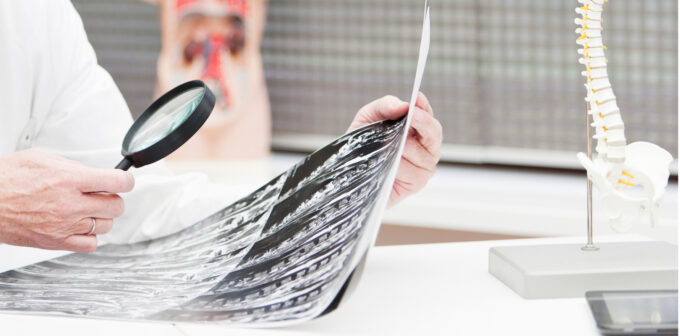These tests are still too common for musculoskeletal issues, but recent evidence suggests the tide may be turning.
Nudge letters appear to cut imaging requests by around 10% in GPs who frequently requested the diagnostic tools for musculoskeletal problems.
While research shows back, neck and shoulder imaging are still requested more than guidelines recommend, Australian data suggests the practice may slowly be improving.
Associate Professor Denise O’Connor, of the Monash-Cabrini Department of Musculoskeletal Health and Clinical Epidemiology, and colleagues analysed the effects of nudge letters on almost 4000 GPs who were in the top 20% of GP referrers for the target imaging tests.
Letters from the Chief Medical Officer of Australia compared the recipient’s imaging request rates with that of their peers, with the aim of curbing requests for 11 commonly overused musculoskeletal diagnostic imaging tests.
Those who received at least one nudge letter made around 2-3 fewer requests per 1000 category 1 consultations over the 18-month study period than their peers who didn’t receive a letter.
This led to an estimated total of 47,000 fewer musculoskeletal imaging test requests, according to Professor O’Connor, who presented the findings at the recent Australian Rheumatology Association conference.
“Compared with control, the feedback intervention resulted in a 10.6% relative reduction in the overall rate of imaging requests over six months, 9.2% over 12 months and 8.0% over 18 months,” Professor O’Connor said.
A separate study, also presented at the conference, outlined just how frequently imaging was requested for patients with these common musculoskeletal conditions.
The population-level study of 150,000 Victorian patients found that of people with low back complaints, 26% had at least one imaging request within a year of diagnosis, as did 34% of people with neck complaints, 53% with shoulder complaints and 43% with knee complaints.
“Unnecessary imaging has significant time, financial and environmental costs, and also has the potential to lead to overdiagnosis and overtreatment, since we know that imaging findings do not generally correlate well with symptoms and that many imaging findings are simply the result of normal age-related changes,” said study lead Dr Romi Haas.
The overall imaging rates didn’t change over time. However, for patients with low back pain and neck complaints there was an increase in requests for MRI and a corresponding decrease in CT requests.
However, a trend towards more sensitive imaging requests over time was observed.
Given serious pathology is estimated in about only 1-6% of low back pain, the study’s findings suggest a significant number of patients are having unnecessary tests, said researchers from the Monash-Cabrini Department of Musculoskeletal Health and Clinical Epidemiology.
While recognising the need to reduce unnecessary imaging, rheumatology professor Graeme Jones suggested it was important not to overlook medicolegal as well as clinical imperatives.
“In addition, patients get a lot out of seeing what is wrong or not wrong on their scans and there is plenty of evidence out there that individual biofeedback changes behaviour while talking doesn’t,” said Professor Jones.
“Doing more sensitive scans seems a good thing, provided you follow the first rule of medicine: don’t order a test unless you know how to interpret it,” he added.


